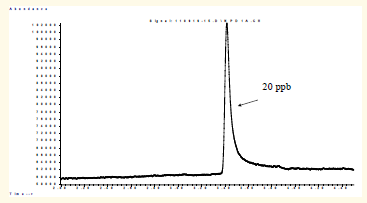The demand for reliable and sensitive monitoring of residual hazardous and toxic materials and their degradation products in challenged environmental matrices, leads to the development of unique ultra-trace analytical methods.
A new method was developed for direct detection of HCN from tap water and commercial beverages. The sample preparation procedure, including parameters such as acidification agent, sample volume, adsorption time, heating and sonication of the medium, was optimized for efficient HS-SPME sampling from tap water. We have found that the use of Amberlyst 16, efficiently acidifies and hydrolyzes cyanide salt, more so than sulfuric or phosphoric acids, while minimizing the deterioration of the SPME fiber and the GC-column adsorption phases.
For a sensitive analysis of the HCN vapors, a GC-NPD/MS(SIM/Scan) method was developed, using two detectors, for simultaneous detection and identification. This method was optimized for a wide range of concentrations (20ppb – 100ppm).

Trace detection of hydrogen cyanide (HCN) from spiked tap water